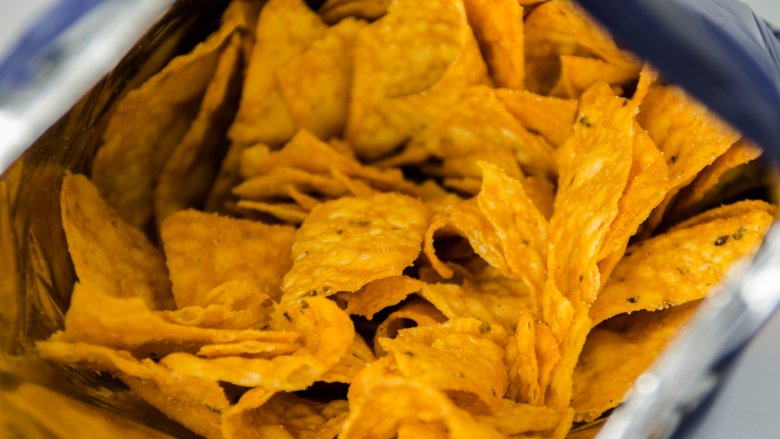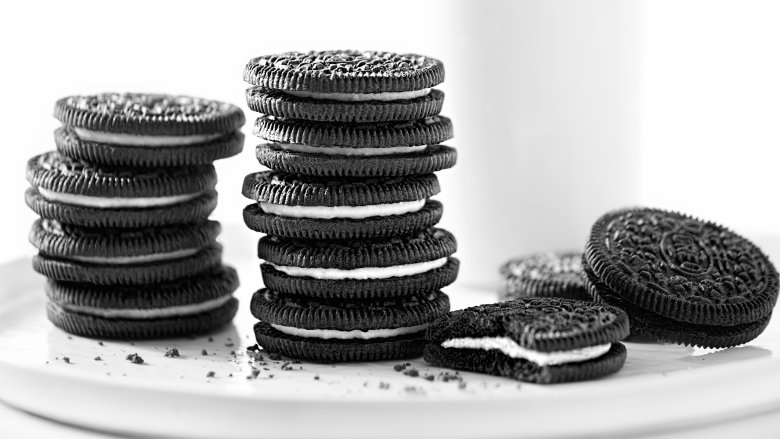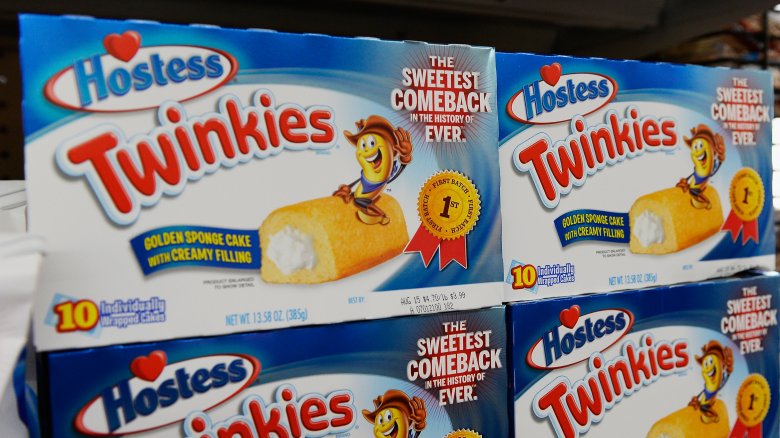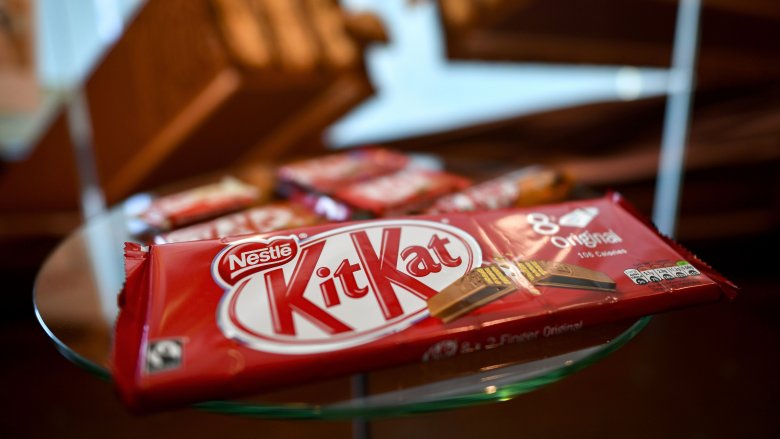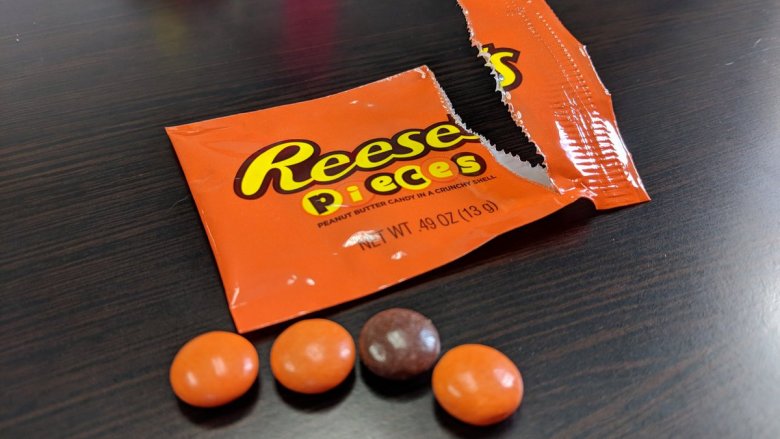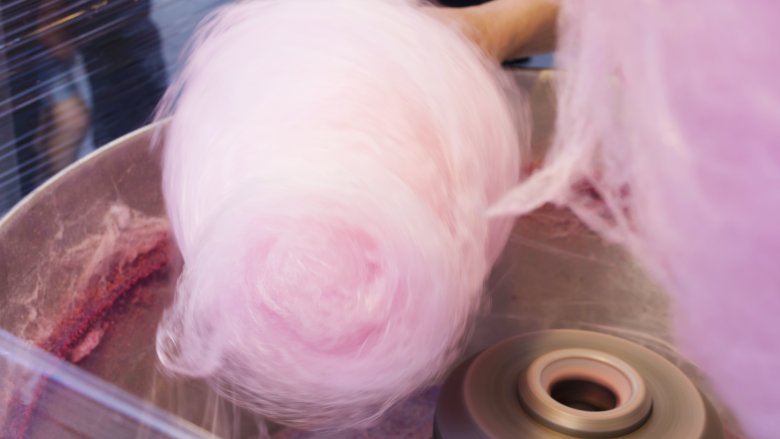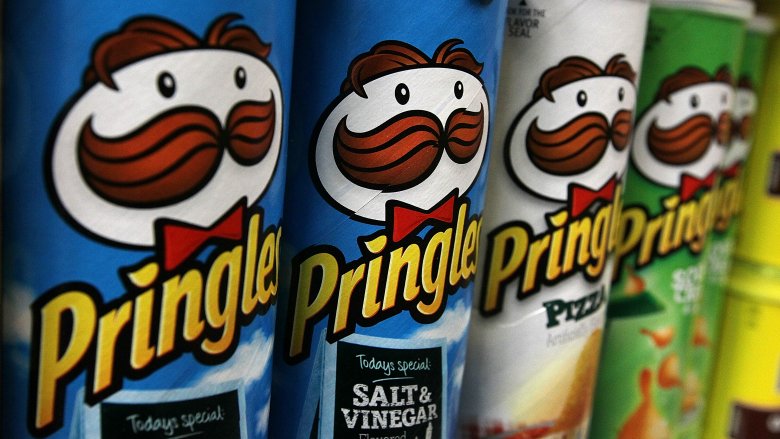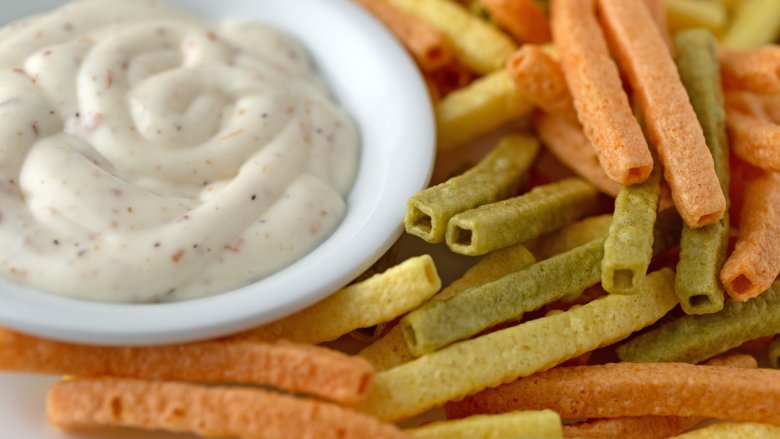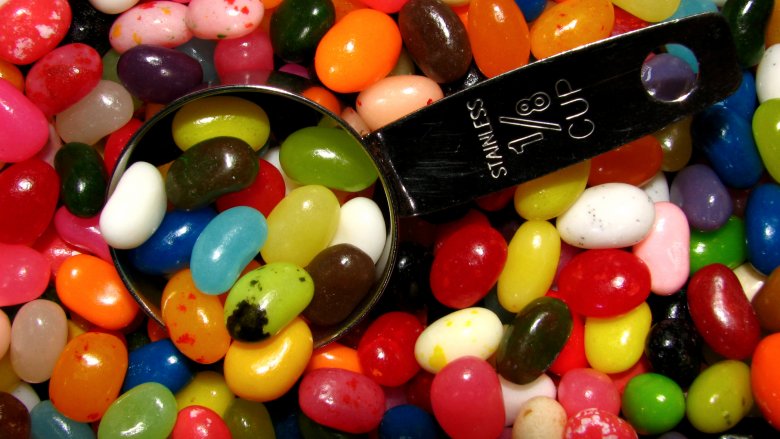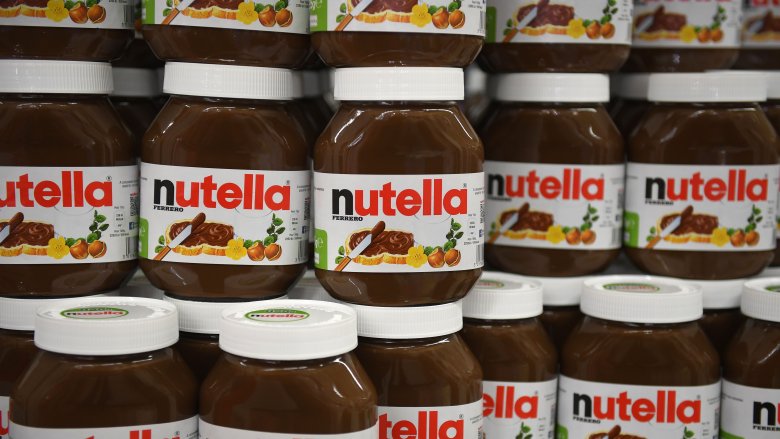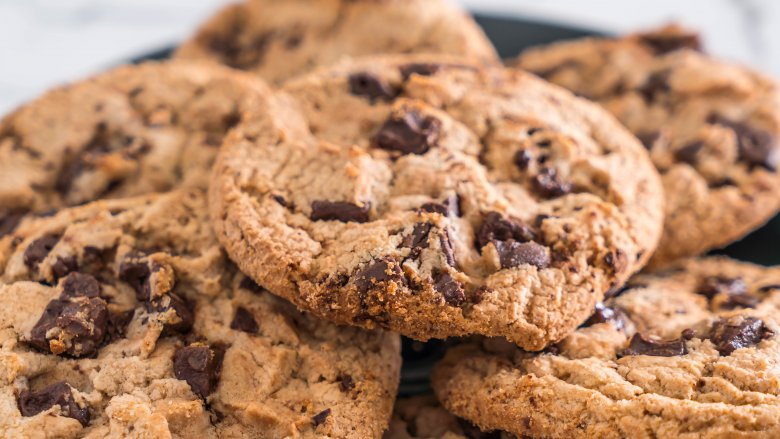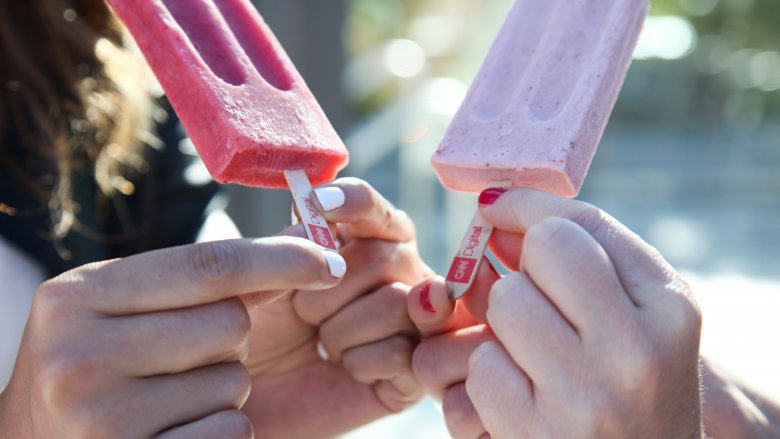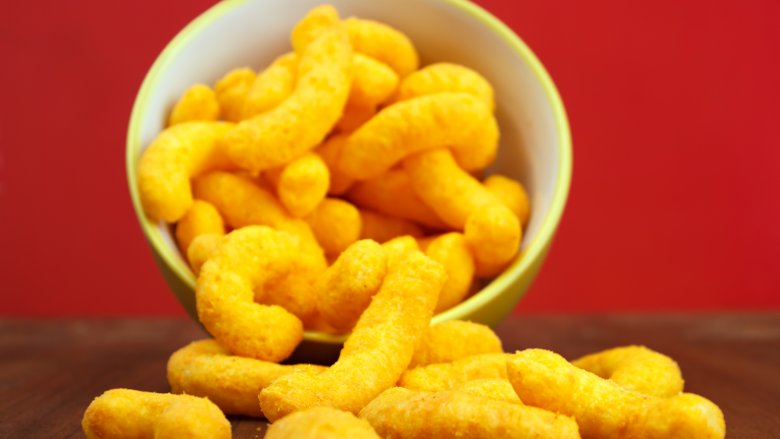Facts You Didn't Know About Your Favorite Junk Foods
Even those of us who strive to stay relatively healthy and avoid processed snacks know that there's nothing quite like the lure of junk food. Whether you have a sweet tooth — and go for candy or chocolates — or a salty tooth — and grab bags of potato chips, processed snacks can be addictive.
But no matter how far you go back with your favorite junk foods, how much do you really know about it — other than the taste, of course?
From the origin of Doritos to the real story behind the bright pink color of bubblegum and whether or not Twinkies have an infinite shelf life, these amusing pieces of junk food trivia are just like Pringles: Once you pop the fun (and fascinating, useless trivia) you just can't stop. Some of them must just make your favorite cheat day snack go down even easier... and some might put a nasty taste in your mouth.
Doritos were invented in a magical land... really!
As it turns out, the House of Mouse didn't just bring us the birth of the theme park. Doritos actually originated in a Disneyland dumpster! As one version of the story goes, Frito-Lay opened a Tex-Mex restaurant in Disneyland right when the park opened in 1955 called "Casa de Fritos."
Allegedly, one day, a salesman from the restaurant's tortilla supplier noticed that the chefs would toss stale tortillas in the dumpster behind the restaurant every day. He suggested that the restaurant, instead of throwing away stale tortillas, put them to good use by cutting them up and frying them for customers.
Sometime after the salty snack caught on with customers and became a staple of the "Casa de Fritos" menu, Frito-Lay executive Archibald Clark West fell in love with the chips and decided to produce them to the mass market. The first Doritos were plain, and the "nacho cheese" flavor that we know and love today did not premiere until 1974.
Oreos are vegan... kind of
You may have heard this bizarre snack rumor before, but the myth is true! Despite being a super-processed sweet (and the most popular cookie in America!) Oreos are technically vegan. The only ingredients in the cookies are unbleached enriched flour, sugar, palm and/or canola oil, cocoa, high fructose corn syrup, leavening, salt, soy lecithin, and chocolate. All of those ingredients are actually vegan. PETA even lists Oreo products as part of its list of the top 20 "accidental vegan foods"
But we can only say that Oreos are technically vegan because Oreo says their products may be cross-contacted with milk, and therefore it is not guaranteed to be 100 percent-free of all dairy products. So vegans, beware — eat these cookies at your own risk, unless you're not afraid of a little dairy cross-contamination. Ultimately it's the Oreo consumer's decision whether or not to categorize the cookie as truly vegan, just like it's every Oreo consumer's decision to bite, twist or dunk.
Twinkies don't last as long as you think
We already know that Twinkies don't last forever, thanks to the dark period when Hostess briefly went bankrupt and the beloved golden cakes disappeared from store shelves from November 2012 to July 2013. But the joke among Europeans and health advocates is that American junk food — chiefly Twinkies — are so highly processed that they have an infinite shelf life. As disturbing as that thought may be, fortunately it's not true.
When Twinkies returned from the dead in 2013, they did actually come back with nearly double the shelf life they had previously. The old expiration date was 26 days from the date of purchase, while the new expiration date is 45 days. This shelf life, according to NPR, is fairly typical for highly-processed foods with a high sugar content. It also means that, no — Twinkies are not the cockroaches of the junk food world, even with their extended shelf life.
Kit Kats have a surprising ingredient
Kit Kats may be one of the most popular Halloween candies in America, but have you ever wondered what's inside the crispy confection? It's not just chocolate filling or whole wafers. Get ready for this mind-blowing inception: Kit Kats are filled with the remnants of ground-up Kit Kats.
The mind-boggling fact actually came to light thanks to a British documentary called BBC Two's Inside the Factory where a factory worker on the assembly line for the popular candy explained that any broken or discarded Kit Kats "go into re-work, where they're used for the fillings for the wafer."
Nestle confirmed the factory worker's revelation with The Today Show: "The 'chocolayer' — the filling between the wafer of a Kit Kat — is made from cocoa liquor, sugar and a small amount of re-worked Kit Kat," a Nestlé UK spokesperson said. "Please note, re-worked Kit Kat is product which cannot be sold."
You don't know Reese's Pieces as well as you think
It all started with ET. Although we may think of Reese's Pieces as the peanut butter version of M&M's, we were shocked to learn that in fact, Reese's Pieces do not contain any chocolate. They're just so small (and shaped exactly like M&M's with the same candy-coated exterior), that you probably just assumed they did.
If you look at the ingredients list in Reese's Pieces, they are made with sugar, peanuts, vegetable oil, corn syrup, and a whole bunch of artificial colors and flavors, but no chocolate anywhere in sight. Reese's Pieces are made of tiny bits of sweetened peanut butter coated in a candy shell. If this blew your mind, know that you're not alone, according to BuzzFeed.
Now if you are looking for some chocolate-Reese's Pieces action, Hershey recently released the Reese's Outrageous Bar — a chocolate candy bar stuffed with peanut butter, caramel and Reese's Pieces that will probably give you that chocolate fix you've been looking for.
The cotton candy machine had an unlikely inventor
Besides flossing more, what's the number one piece of cliched dental hygiene advice from almost any dentist? "Cut back on the sugar!" That's why we find it pretty ironic that the cotton candy machine was actually invented by a dentist! Perhaps he thought people would eat sugar-free candy floss?
According to The Daily Meal, the invention of the cotton candy machine is actually credited to William James Morrison, a dentist and inventor from Nashville, Tennessee. As the story goes, Morrison worked with his friend, John C. Wharton — a confectioner — to create a device that would take the grueling manual labor out of spinning sugar.
Together, they created a machine known as the "electric candy machine" that used air in a spinning central chamber to force sugar through a wire gauze and create the fluffy, cloud-like confection we know today as cotton candy. Tell this story to your dentist the next time he scolds you for cavities!
A Pringles can once served a very strange purpose
The iconic tube packaging of Pringles — our favorite not-quite-potato chip — is definitely one of the draws of this curved, salty snack (besides being able to make duck faces with two crisps). But did you know that someone actually invented the iconic shape of the tube that so neatly holds a Pringles stack without any breakage? That's not the only purpose it can serve, though.
Fredric J Baur, of Cincinnati, filed for a patent for the Pringles tube design in 1966 when he worked for P&G. Bauer retired from P&G in the early 1980s, but he was still a Pringles man at heart until the very end.
According to The Guardian, when Baur passed away in 2008, some of his cremated remains were buried in a Pringles can. And this was not just a silly stunt, either. Apparently Baur had specifically requested this unusual burial and his children honored his request when he died at the age of 89.
Veggie Straws aren't made of what you think
Veggie Straws and other similar snacks have grown in popularity recently, and why not? They have the same salty, satisfying crunch as chips but they're healthier because instead of greasy potatoes, they're made of dehydrated vegetables... right?
Unfortunately, this guilt-free snack is too good to be true, and Veggie Straws was actually sued in 2017 by two duped customers who claim that the Veggie Straws packaging is misleading because it does not contain whole vegetables. Instead, the ingredient list includes potato flour, potato starch, corn starch, and "vegetable byproducts" like tomato paste and spinach powder. The lawsuit claimed that consumers were not actually getting any nutritional benefits by consuming these vegetable byproducts, according to The New York Post.
Earlier this year, Hain Celestial Group (the makers of Veggie Straws) won this court battle, and the court said that the Veggie Straws packaging was not misleading since the ingredients did technically come from vegetables. Still, don't be fooled into thinking that these salty snacks are the miracle, nutritious alternative to potato chips — and be sure to munch in moderation!
Jelly Bellies have a presidential history
Franklin Delano Roosevelt was famously obsessed with grilled cheese sandwiches, and we all know how Donald Trump feels about his well-done steak. But perhaps the most peculiar presidential food obsession was Ronald Reagan's love for Jelly Belly jelly beans.
President Reagan fell in love with these sugary beans when he was looking for a substitute after he quit smoking. Jelly Belly, according to Atlas Obscura, quietly supplied the then-governor with monthly shipments of jelly beans, and they provided three-and-a-half tons of patriotic jelly beans (in cherry, coconut, and blueberry flavors) to his presidential inauguration.
As president, Reagan ordered 720 bags of Jelly Belly jelly beans per month to distribute throughout the White House, his staff, and even to dignitaries as gifts. President Reagan famously told a group of reporters, "You can tell a lot about a fella's character by whether he picks out all of one color or just grabs a handful."
Nutella is responsible for a crazy shortage
Nutella may be one of the most popular food spreads in the world (and honestly, who doesn't love sticking a spoon into that jar of chocolate-hazelnut goodness), but you probably don't realize how much the world is really obsessed with Nutella.
According to National Geographic, Ferrero — the makers of Nutella — use up one-quarter of the world's hazelnut supply. The worldwide demand for hazelnuts — mostly to produce gobs of that sweet spread — has resulted in a shortage and farmers struggle to keep up.
"It's a predicted shortage — really, because of Nutella and hazelnut candies," Tom Molnar told The Philadelphia Inquirer. "There's really not enough hazelnuts to have that demand be met as it grows, so the big candy companies are sort of scrambling."
Nutella competitors claim there is a market-hogging conspiracy concerning Ferrero's grips on the market, but National Geographic says that Ferrero just may have smarter business sense.
Rutgers professors are currently working on a hazelnut variety that can be grown in colder climates.
Chocolate chip cookies weren't a happy accident
Chocolate chip cookies are such a staple of the sweets world that we probably don't even realize they weren't invented all that long ago. Ruth Wakefield, who owned the Toll House restaurant with her husband in 1930's Massachusetts (yes, that Toll House) was known for her dessert creations.
Legend has it, she was trying to make chocolate drop cookies when she realized she was out of baking chocolate. Wakefield instead decided to break up a Nestle chocolate bar into small pieces and drop them into her cookie dough mixture, creating the famous cookie by accident. Unfortunately, it looks like the truth behind that sweet story was less "dumb luck" and more careful trial and error, "by dint of training, talent, [and] hard work," Carolyn Wyman, author of The Great American Chocolate Chip Cookie Book told The New Yorker.
Ruth Wakefield's chocolate chip cookie, initially made for her guests at the Toll House restaurant, went on to become the signature comfort food of the Great Depression generation.
Bubble gum is pink for a simple reason
Bubblegum is the familiar confection that no one really questions. Bubblegum flavor is an unmistakable (yet unidentifiable) flavor, and the gum itself is nearly always a bright pink color that's earned its own Crayola color. But why is bubblegum such a bright pink color?
As the story goes, in 1928, Walter E. Diemer, a worker for Fleer Chewing Gum company, was experimenting with a gum that could allow you to blow bubbles but still keep on chewing the gum after the bubble popped — later to be named Dubble Bubble.
After adding a little latex to their original formula, the chewing gum was able to last a long time. But unfortunately, the gum was an "unappetizing grey" color, so the workers scrambled to make their new bubblegum invention a more pleasing color. The only dye available was bright pink, and that's how it was originally sold in stores and became a chewy tradition.
Popsicles had an unexpected start
You know how so many amazing foods were created by accident? The Popsicle wasn't only created as a mistake, it was also invented by an 11-year-old! In 1905, a San Francisco Bay area kid named Frank Epperson accidentally left a mix of sugary soda powder with water overnight. The resulting concoction was a frozen soda-like pop. Pleased with his sweet treat, Epperson decided to sell his creation on Neptune Beach that summer.
Later, when sale were a huge success, Epperson applied for a patent and the frozen treat became known as "Epsicles" after his last name. But Epperson's children and grandchildren called it "Pop's sicle" and eventually, the name "Popsicle" just stuck. Unfortunately, Epperson's sweet invention took a sad turn and he had to liquidate his business to keep afloat financially.
According to NPR, people debate the veracity of the details in this "charming" origin story, but Epperson definitely has cemented his place in history as the Popsicle inventor.
Cheetos are addictive on purpose
As you may well imagine, most junk food is designed to be addictive, hence the high levels of sugar and fat content that your body craves. But Cheetos are on a whole other level.
"This is one of the most marvelously constructed foods on the planet, in terms of pure pleasure," Stephen Witherly, a food scientist told New York Times Magazine, referring to Cheetos.
He said that what makes Cheetos uniquely addictive (besides the salt and fat content and the strangely delicious orange dust we've come to associate with indulgent snacking), is how quickly they dissolve.
"It's called vanishing caloric density," Witherly said. "If something melts down quickly, your brain thinks that there's no calories in it . . . you can just keep eating it forever."
Cheetos also achieve the perfect "bliss point" which, according to Pop Science, is the level of flavor intensity achieved by snack foods that is just salty/sweet enough to keep us wanting more, but not overwhelming enough so that our brain gets tired of the strong flavor.

